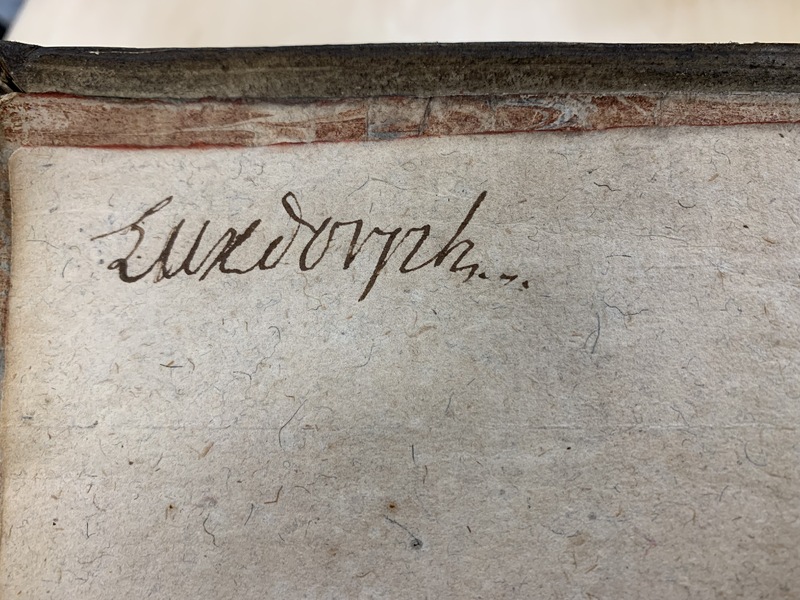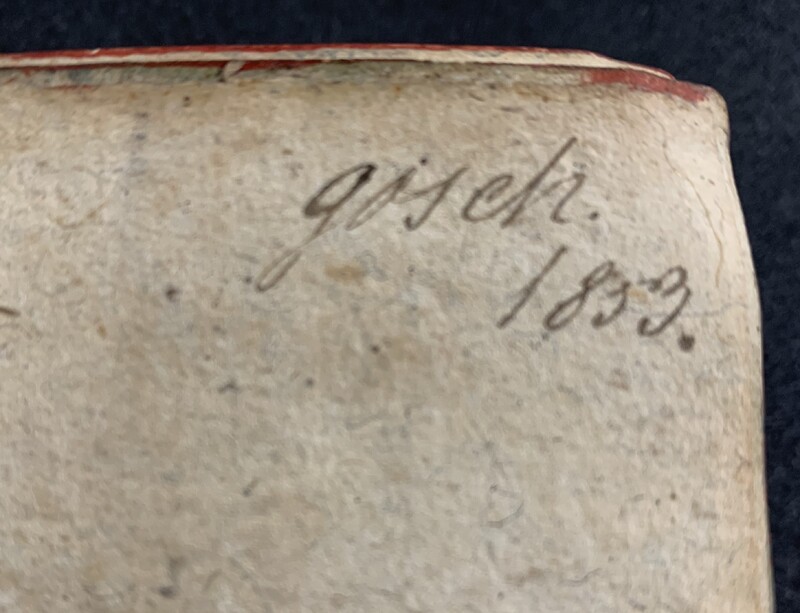About the Owners
Seventeenth Century
There is no evidence to definitively identify the first owner of Galen's book. However, the presence of the Emperor Rudolph II portrait, dates inferred from annotations, and subject agreement between them and medical interests of possible candidates, allows for some guesses as to the ownership at the turn of seventeenth century.
It could have been Hippolyt Guarinoni (1571-1654) – the son of an emperor’s physician, educated in Prague Jesuit College and University of Padua, who was a counter reformation activist, municipal physician in Hall (Tirol), and personal physician to the Habsburgs. He dedicated one of his books on alchemy to Rudolph II. It is probable that he might have studied Galen’s book and have had reasons to ask the binder to put the emperor’s portrait on the cover.
Another possible candidate is Mathias Borbonius (1566-1629) – the physician to three emperors, later banished from Bohemia (1623). After his banishment, he practiced medicine under the protection of the Polish king in Torun. As the author of theses on fevers and gout (published in Basel in 1596 and 1597), he would be familiar with Francisco Valles’ work, which is mentioned on the margin of Galen’s book.
However, the most likely candidate is Johann Jessenius (1566-1621) – a physician, surgeon, anatomist, Renaissance polyglot and polymath, and friend of Tycho Brache, who studied in Padua under Girolamo Fabrizio d’Aquapendente. As a protestant he could not receive a degree from the Padua Catholic University, but he was awarded a medical degree from Prague University, with the Doctor of Medicine title bestowed on him by Emperor Rudolph II. He was a court physician of Saxonian dynasty in Dresden, a royal physician in Vienna, a professor and rector of Wittenberg Academy, and later of Prague University. He performed first public dissection in Prague in 1600, after he was invited to the city by Tycho Brache. He stayed for several years, during which he dedicated three of his works to Rudolph II. Therefore, he had reasons to want the binding embellished with Rudolph's portrait. Other clues for his possible ownership are in the book's annotations, which correspond to medical interests of Jessenius. Numerous notes in the section on bones include comparisons of passages from Galen to those of the Italian anatomist Gabriele Falloppio. Jessenius edited Vesalius’ criticism of Gabriele Falloppio and published his own work on bones (De ossibus tractatus, Wittebergae 1601). He also was the author of Institutiones chirurgicae quibus universa manu medendi ratio ostenditur (1601) and De cavenda tollendaque peste consilium (1606).
Eighteenth Century
It is certain that in the eighteenth century this copy belonged to Bolle Willum Luxdorph (1716-1788), Danish poet, historian, civil servant, and book collector. His signature and his super ex libris (an elephant brandishing arrows in a coronet) gilded on the front cover are prominent. Luxdorph's library of 15,000 volumes was sold at auction after his death. The book ended up in the Bibliotheca Communitatis Regiae in Copenhagen (established in 1777). The gild initials B.C.R. and Luxdorph’s super exlibris were probably added at that time. The books stayed there until the library was partially sold in 1853. A great number of the books from Luxdorph’s collection ended up in the Royal Library in Copenhagen, but Galen’s Works left the continent.
Nineteenth Century
Who owned it in the nineteenth century? How did it get to England? The signature “gosch 1853” offers some possible explanations as to how the book ended up in London. Christian Carl August Gosch (1832-1913) was a Danish zoologist and political and scientific writer. In the 1860s, he moved to England and was there a titular attaché to Danish Embassy in London (1862-1906). Among his scientific writings, there is a book on the history of medical sciences in Denmark, so it is possible that his interest in medicine led him to Galen. He could have acquired Cl. Galeni pergameni omnia in Denmark in 1853 and brought it with him to London.
Twentieth Century
The fate of the book before it was acquired by the London bookseller Bernard Quaritch remains a mystery, as I could not confirm that Quaritch acquired it from C.C.A. Gosch. Though it seems to be a reasonable assumption that the book went directly from Gosch to Quaritch. The next documented step is that this bookseller sold it to Mrs. Heard in 1915. Was she buying it as a present for her husband, Dr. James D. Heard, who was a regular customer of Quaritch, or was she just acting as his secretary? The letter from the seller to Mrs. Heard reveals that the books were too heavy to be sent via parcel service. They were shipped to Quaritch’s agent in New York and from there delivered to Pittsburgh. Donated to the Falk Library by Dr. Heard’s heirs, Galen’s Works wait in the Rare Book Room for an inquisitive user.






